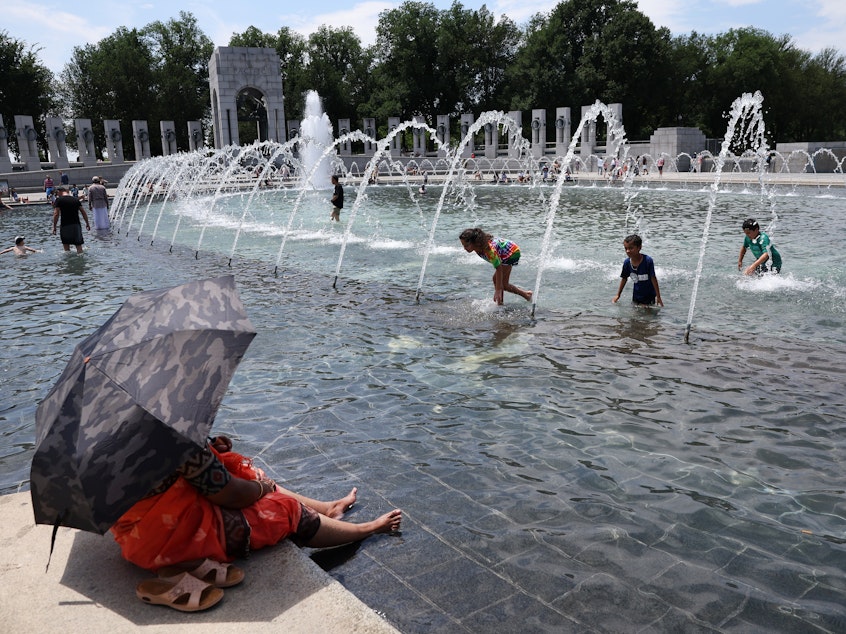Heat, storms, and fire risk: Fourth of July weather is nothing to celebrate

Check the forecast before you set up for any cookouts this Fourth of July holiday. Dangerously hot weather threatens parts of the Southwest and the Pacific Northwest, while severe thunderstorms pose a risk in the Midwest.
The mid-Atlantic and Southeast can also expect storms — a continuation of the "unsettled weather" the region has seen lately, in the words of the National Weather Service. And while extreme heat has eased its grip on much of the Southeast, heat advisories continue in parts of North Carolina and Florida.
The past few weeks have been grueling for vast swaths of America. A heat dome brought brutal temperatures to areas including Texas and the South. High humidity made the heat particularly dangerous, and in some cases, deadly.
The medical examiner in Texas' Webb County, where Laredo is located, reported nine heat-related deaths last month, Texas Public Radio's Marian Navarro reported on NPR's Newscast, while heat-related trips to the emergency room rose sharply in Texas and surrounding states.
In some regions, hot, dry weather has created an elevated risk of fire — also bad news for Independence Day.
Even famously rainy Seattle is worried about the risks posed by sparks.
Bellamy Pailthorp, from NPR member station KNKX in Seattle, reports that officials are urging the public to use extra caution around fireworks after a very warm and dry forecast for Tuesday, on top of a moderate drought.
"July 4 always brings extra risk of fire," Pailthorp reports. "But this year, a very warm and dry forecast for the holiday is coming on top of a moderate drought that has already developed in western Washington."
A red flag warning for elevated risk of fires is also in effect in western Colorado.
And speaking of wildfires, smoke from Canadian fires has drifted over the Midwest, Great Lakes, and Northeast in recent weeks, triggering air quality alerts. While most of the U.S. is currently experiencing a break from that unhealthy smoke, it's not a permanent reprieve. The fires continue to burn, meaning the smoke could easily return.
Poor air quality is one reason some cities are turning to lasers and drones instead of fireworks, which can worsen already-hazardous air conditions.
Hot weather, thunderstorms, and wildfires are a fact of life in summer. But the hazardous conditions recently — particularly the extreme heat and the wildfire risks — are also inextricably linked to human-caused global warming.
Climate change makes heat waves more intense and more prolonged. One county in Oregon is suing oil and gas companies over a heat wave that killed hundreds in 2021.
Climate change also increases the risk of wildfires.
This year, the long-term trend of global warming is exacerbated by the temporary natural phenomenon known as El Niño. During an El Niño event, global temperatures tend to rise. The World Meteorological Organization declared the start of an El Niño on Tuesday, joining the U.S., which formally identified the weather pattern last month.
The result will almost certainly be temperature records shattered around the world.
Both long-term warming and the cyclical El Niño are contributing to current temperatures. It's impossible to fully tease apart the impacts. But consider this: as NPR's Rebecca Hersher has reported, even a prolonged La Niña from 2020 to 2023 — the other side of the cycle, when global temperatures are depressed — didn't prevent the last eight years from being the hottest ever recorded.
"That's how powerful human-caused warming is," Hersher writes. "It blows Earth's natural temperature variability out of the water." [Copyright 2023 NPR]

